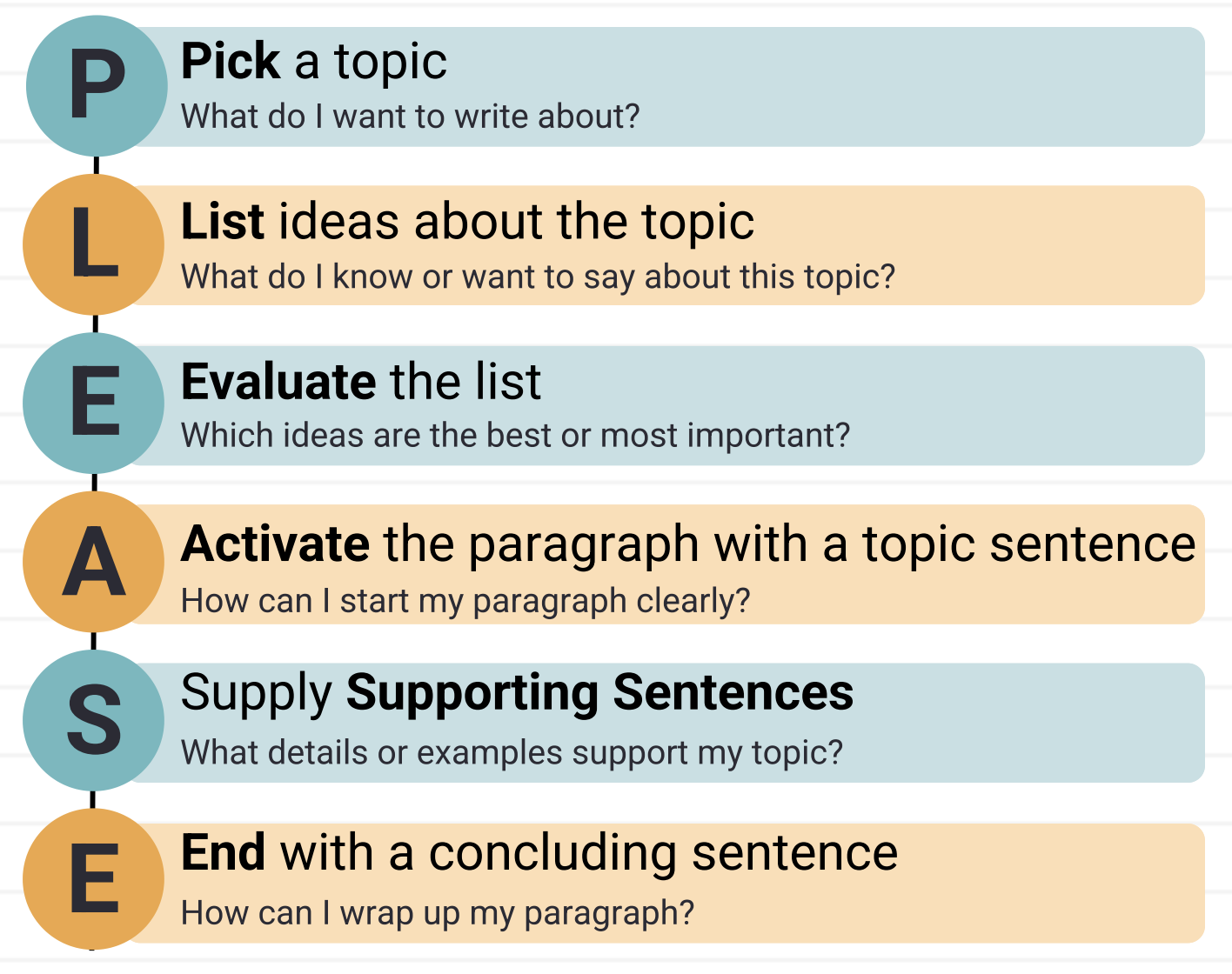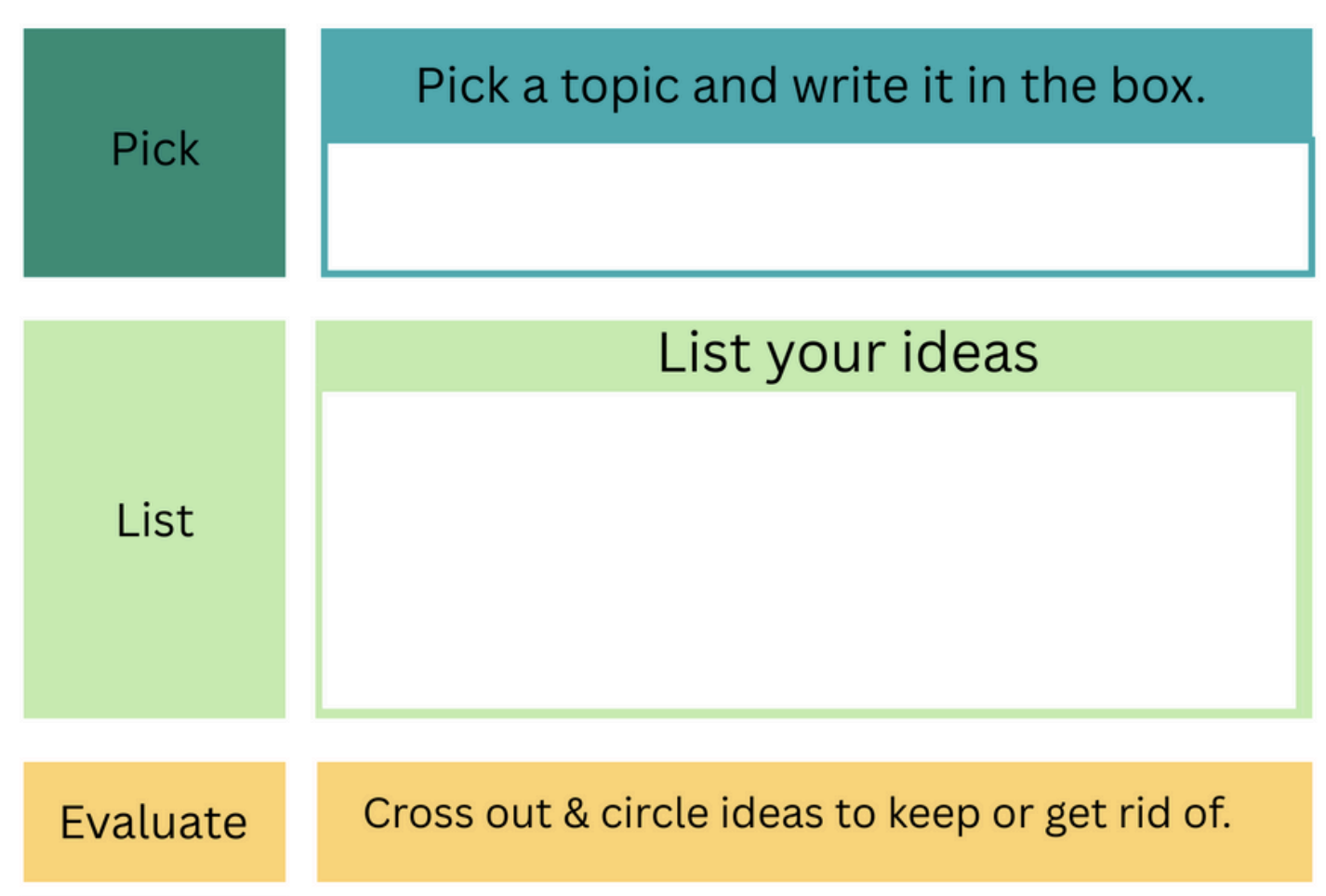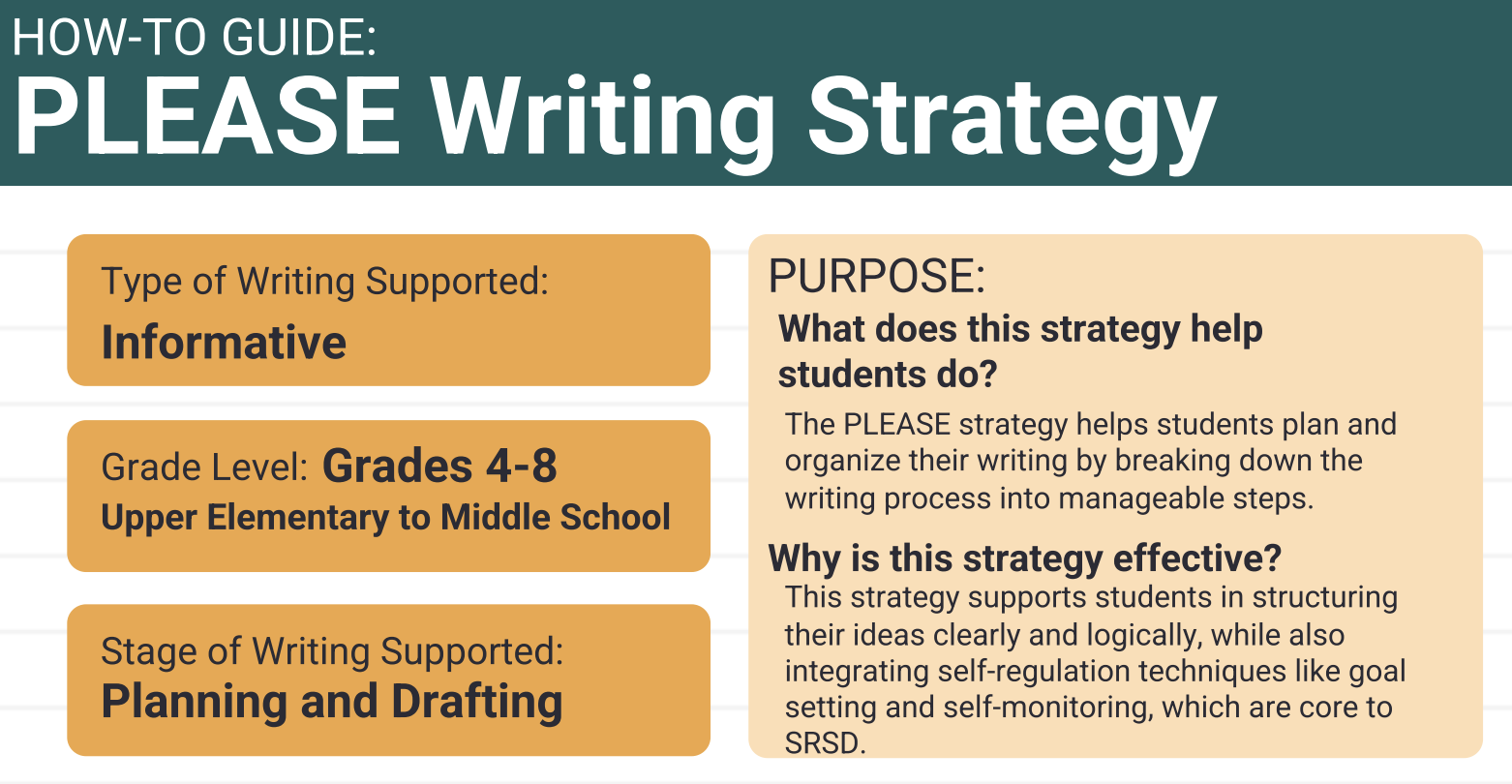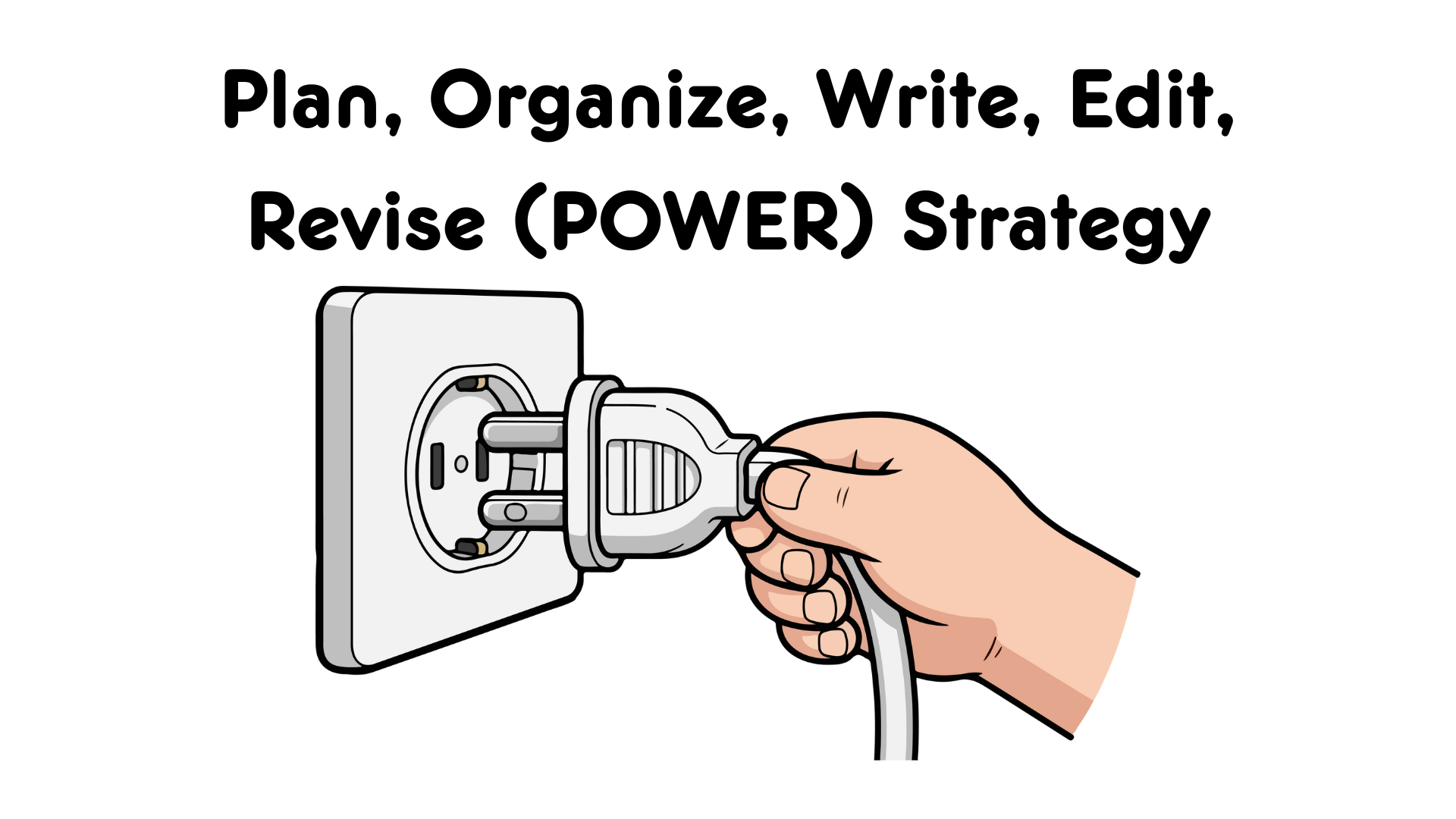Pick, List, Evaluate, Activite, Supply, End (PLEASE) Strategy
Strategy Parameters
- Type of Writing Supported: Informative & Expository
- Grade Level: Upper elementary to middle school (Grades 4–8)
- Stage of Writing Supported: Planning and drafting
At-A-Glance
The PLEASE strategy is a step-by-step organizational framework within the SRSD model designed to help students plan, draft, and self-regulate their informative and expository writing.

Overview
This strategy systematically guides students through six discrete stages—Pick, List, Evaluate, Activate, Supply, End—to construct well-organized paragraphs by focusing on topic selection, idea generation, evidence support, and clear conclusion. It incorporates self-regulation techniques like goal setting and self-monitoring, which are central to the overarching Self-Regulated Strategy Development (SRSD) framework, ensuring that students are actively engaged in managing their own learning process. By breaking down the complex writing process into manageable tasks, PLEASE not only improves the structural quality of student writing but also fosters greater student ownership over their educational development.
Purpose and Benefits
This strategy helps students:
-
Establish a clear, manageable routine for constructing well-developed, single paragraphs.
-
Generate and refine their content ideas before beginning to draft, ensuring relevance and quality.
-
Develop metacognitive skills by incorporating self-regulation (goal setting, self-monitoring) into the writing task.
-
Clearly understand the structural components of a strong paragraph, from the topic sentence to the conclusion.
-
Increase writing self-efficacy and independence by providing a predictable, effective planning tool.
Why It's Effective
-
The acronym (PLEASE) acts as a memorable mnemonic device, making the multi-step process easier for students to recall and apply independently.
-
It directly addresses the planning and drafting stages of writing, which are often the most challenging for developing writers, by providing explicit, sequential instruction.
-
The inclusion of an evaluation step forces students to critically assess their generated ideas, leading to stronger, more focused supporting details.
-
It aligns with the SRSD framework, which has a strong evidence base for improving the writing quality of students, especially those who struggle with executive function.
-
Each step is paired with a guiding question, which transforms an abstract task into a concrete, goal-directed inquiry, promoting deeper engagement and logical thought in organizing text.
Downloads




